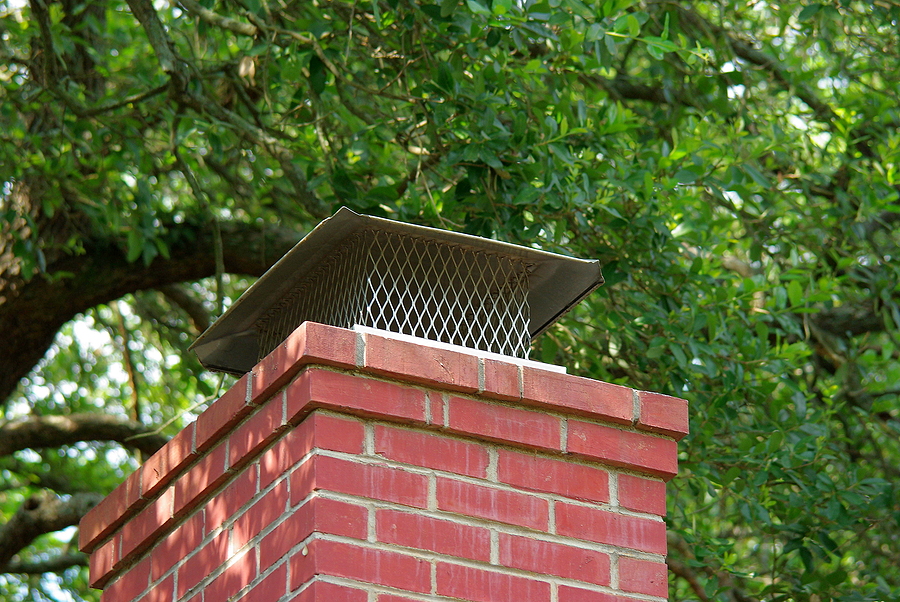Discovering wildlife in your chimney can transform a quaint, cozy fireplace into a source of stress and concern. While the sound of tiny feet scampering or the occasional bird chirp might seem initially charming, these uninvited guests can pose significant risks to both your home and the animals themselves. From squirrels and raccoons to birds and bats, our homes inadvertently attract a variety of wildlife seeking shelter and warmth.
This blog post aims to guide you through identifying signs of animal presence in your chimney, understanding the risks involved, and exploring humane and effective strategies to deal with these unwanted tenants, ensuring the safety and comfort of both your family and your furry or feathered visitors.

Identifying Signs of Animal Presence
The first step in addressing a wildlife issue in your chimney is to confirm its presence. While some animals may accidentally wander into your fireplace and find themselves unable to get back out, others deliberately seek refuge in the warmth and shelter of a chimney. Here are some common signs that indicate animal presence in your chimney:
Strange noises: If you hear scratching, chirping, or other unusual sounds coming from your chimney, chances are there is some type of wildlife residing inside.
Foul odors: Animals tend to leave droppings and urine behind, which can cause a distinct odor in your home. If you notice a foul smell emanating from your fireplace, it’s worth investigating further.
Debris and nesting materials: Animals such as squirrels and birds will often bring in twigs, leaves, and other debris to build nests in your chimney. If you notice any unusual materials inside your fireplace, it could be a sign of animal activity.
Damaged chimney cap or screen: Many animals can squeeze through small openings, so if your chimney cap or screen is damaged or missing, it can serve as an open invitation for wildlife to enter and take up residence.
Understanding the Risks of an Animal Infestation
While wildlife in your chimney may seem like a harmless inconvenience, there are several risks that come with their presence. These include:
Fire hazards: Animals can bring flammable materials into your chimney, increasing the risk of a fire if they build a nest or become stuck in the flue.
Structural damage: Wildlife can cause significant damage to your chimney and surrounding areas as they try to enter or exit, potentially compromising its structural integrity.
Health hazards: Animals carry a variety of diseases and parasites that can be transmitted to humans through contact with their droppings, urine, or even direct contact.
Humane Wildlife Removal Strategies
If you have confirmed the presence of wildlife in your chimney, it’s important to take action to remove them as soon as possible. Here are some humane strategies that can help:
Hiring a professional: The safest and most effective way to remove wildlife from your chimney is by hiring a professional animal removal company. They will have the necessary knowledge and experience to safely and humanely remove the animals and make any necessary repairs to your chimney.
Using deterrents: There are several animal deterrence products on the market, such as ultrasonic devices and chemical repellents, that may help discourage wildlife from entering your chimney. However, these methods may not be effective for all types of animals and could potentially harm them or other non-targeted species. You can make homemade animal repellent too.
Installing a chimney cap or screen: To prevent animals from entering your chimney in the first place, consider installing a cap or screen that covers the opening. This will not only keep out wildlife but also debris and rainwater.
Conclusion
Dealing with unwelcome wildlife in your chimney can be a challenging and delicate situation. By recognizing signs of animal presence, understanding the risks involved, and employing humane removal strategies, you can effectively address the issue and prevent it from happening again in the future. Remember to always prioritize the safety and well-being of both your family and the animals involved. With proper precautions and prompt action, you can keep your fireplace cozy without any unexpected furry or feathered guests. So go ahead, light that fire and enjoy a peaceful evening by the hearth.
Don’t let unwelcome tenants dampen your enjoyment of your fireplace! Contact Virginia Wildlife Pros at 804-292-0156 for professional animal removal and control in Richmond, or its surrounding towns. We serve residential and commercial customers with free quotes, free advice, and quality work.
Related Posts:
The Importance of Professional Wildlife Removal and Control Service
Preventing Animal Infestations: What You Need to Know
Nature in Balance: Ethical Approaches to Wildlife Control

